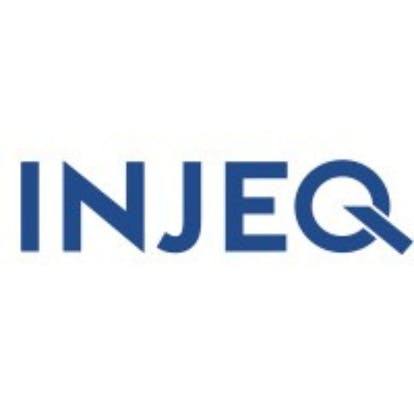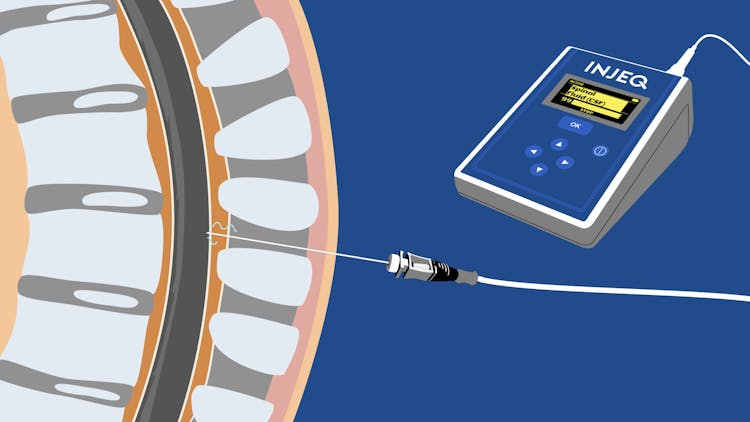Products
First generation IQ-Tip®️ smart needle
The IQ-Tip® needle consists of the following components, sold together or separately: the IQ-Tip® analyzer, the disposable IQ-Tip® spinal needle (three different lengths) and the disposable IQ-Tip® cable connecting the needle to the analyzer. Injeq’s IQ-Tip® received CE certificate in December 2021 after three successful clinical trials.
Injeq’s IQ-Tip® spinal needle and cable
- The design of Injeq’s IQ-Tip® spinal needle is unique
- Spinal needles are manufactured and sold in three different lengths
- The cable serves as a connector component for the Injeq IQ-Tip® spinal needle and analyzer
- The spinal needle and cable are sterile and disposable
Injeq IQ-Tip® analyzer
- Injeq’s IQ-Tip® analyzer is designed to identify the tissue at the tip of the needle and report in real time when the spinal needle hits the cerebrospinal fluid
- The IQ-Tip® analyzer works when it is connected to the disposable and sterile IQ-Tip® spinal needle and IQ-Tip® cable, and it measures the bioimpedance of the tissue touching the tip of the needle 200 times per second at 15 different frequencies
- The IQ-Tip® analyzer facilitates the doctor's work in lumbar punctures. The analyzer gives both an alarm sound and a visual alarm when the tip of the needle hits the spinal fluid
- The IQ-Tip® analyzer is a reusable product and is typically sold through distributors as a one-time purchase to hospitals
The indication areas of the smart needle are:
Neonatology: Performing lumbar punctures on newborns is challenging for anatomical and physiological reasons. The IQ-Tip® needle's bioimpedance spectroscopy provides information when the tip of the needle has reached the cerebrospinal fluid (CSF) and gives an alarm thereby.
In haemato-oncology: it is particularly important to avoid bleeding into the spinal cavity during a lumbar puncture with leukaemia patients. This kind of bleeding may introduce leukaemia cells from blood to the central nervous system area causing secondary cancers for instance in brains.
In neurological diseases, lumbar punctures are performed for both diagnosis and drug administration directly into the spinal cavity. Good quality samples are needed for correct diagnosis. The most common neurological diseases, where lumbar punctures are used are meningitises, Alzheimer’s and Parkinson’s diseases, neuroborreliosis, multiple sclerosis (MS disease), amylotropic lateral sclerosis (ALS) among others.
In emergency care, lumbar punctures can be performed by less experienced medical professionals. An IQ-Tip-assisted® lumbar puncture can give a safer feeling for the physician facing the challenge and simultaneously improve the patient experience. The very special customer group are the paramedics, who work in extremely difficult conditions on the field. Their user comments and improvement ideas are important for Injeq’s R&D team. There are early ideas that the next application area of the sensing needle can come from this particular area.
Injeq uses patented technology, and currently, there are no competing products on the market. A strongly regulated market and sales license already obtained in Europe create a significant head start compared to potential competitors.













